Passiflora ligularis, commonly known as granadilla, is a Passion flower species that grows prolifically in our mountainside gardens and in the wild here in Ecuador. It is an attractive climbing vine with large heart-shaped leaves that have a purple-ish tint when young. Its flowers are incredibly beautiful and aromatic.
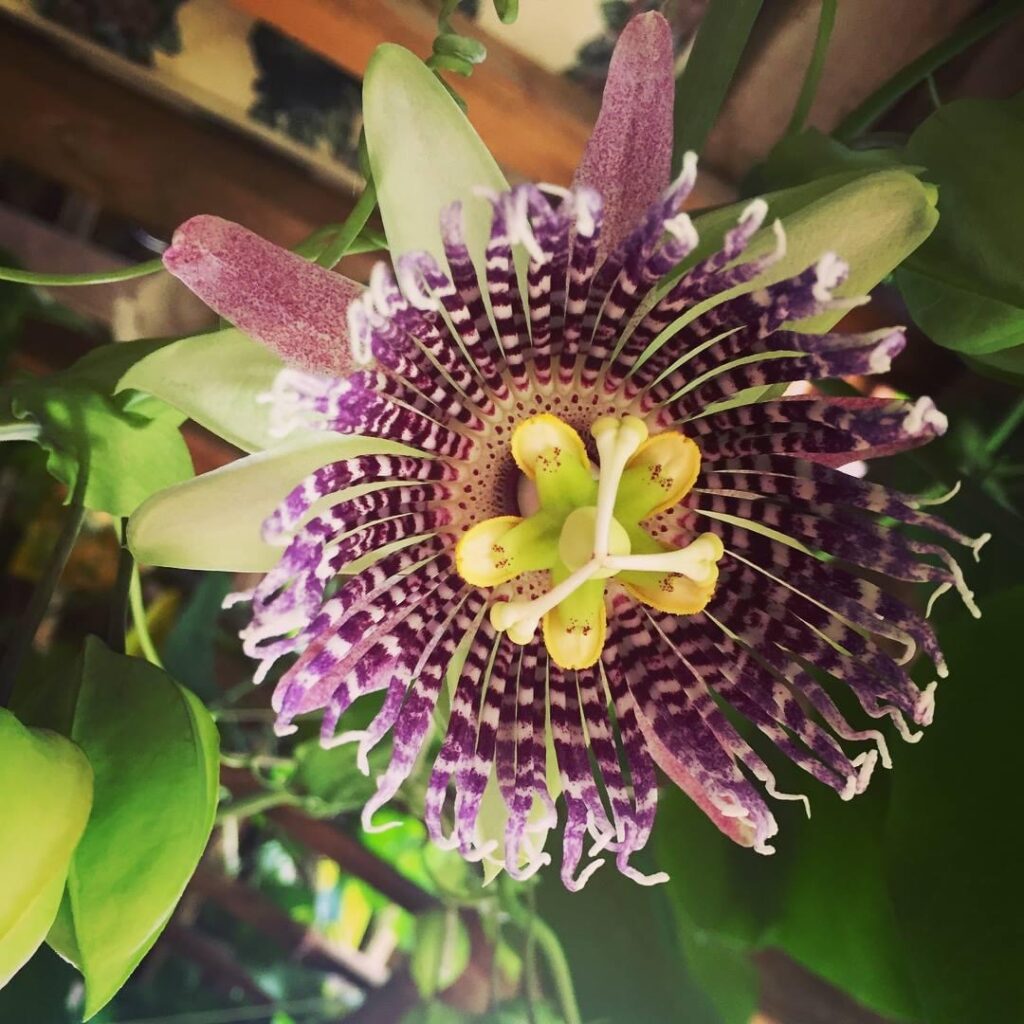
Granadilla produces oval-shaped orange fruits that are edible and have a very pleasant sweet flavor. Some have said that they are the most delicious of the passion fruit species (I tend to agree with this, though Passiflora edulis is also quite tasty, albeit, much more sour).
Most often granadilla fruits are enjoyed raw. We usually just crack them open and slurp or spoon out the pulp covered seeds, but the fruit is also a nice topping for yogurt or fruit salads and the juice can be used in drinks.
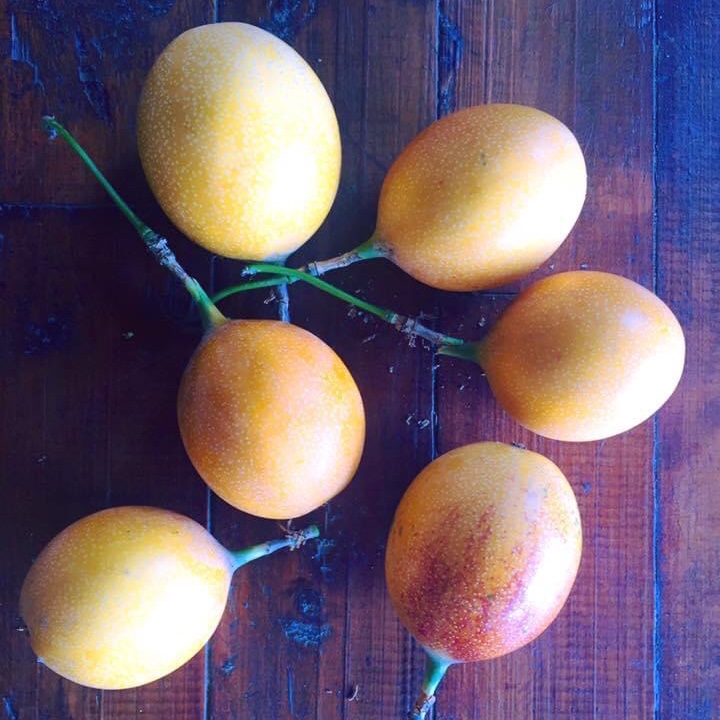
Granadilla is found growing cultivated & wild in Western and Northern South America — including Ecuador, Columbia, Peru, and Bolivia —through Central America to Mexico. It has also been grown in Hawaii, though attempts to cultivate granadilla in Florida and California have not been very successful.
Passiflora ligularis has fairly specific temperature requirements — preferring sub-tropical, not tropical climates. According to the Plants For a Future online plant database, “It grows best in areas where annual daytime temperatures are within the range 22 – 26°c, but can tolerate 16 – 31°c. When dormant, the plant can survive temperatures down to about -1°c, but young growth can be severely damaged at 0°c.”
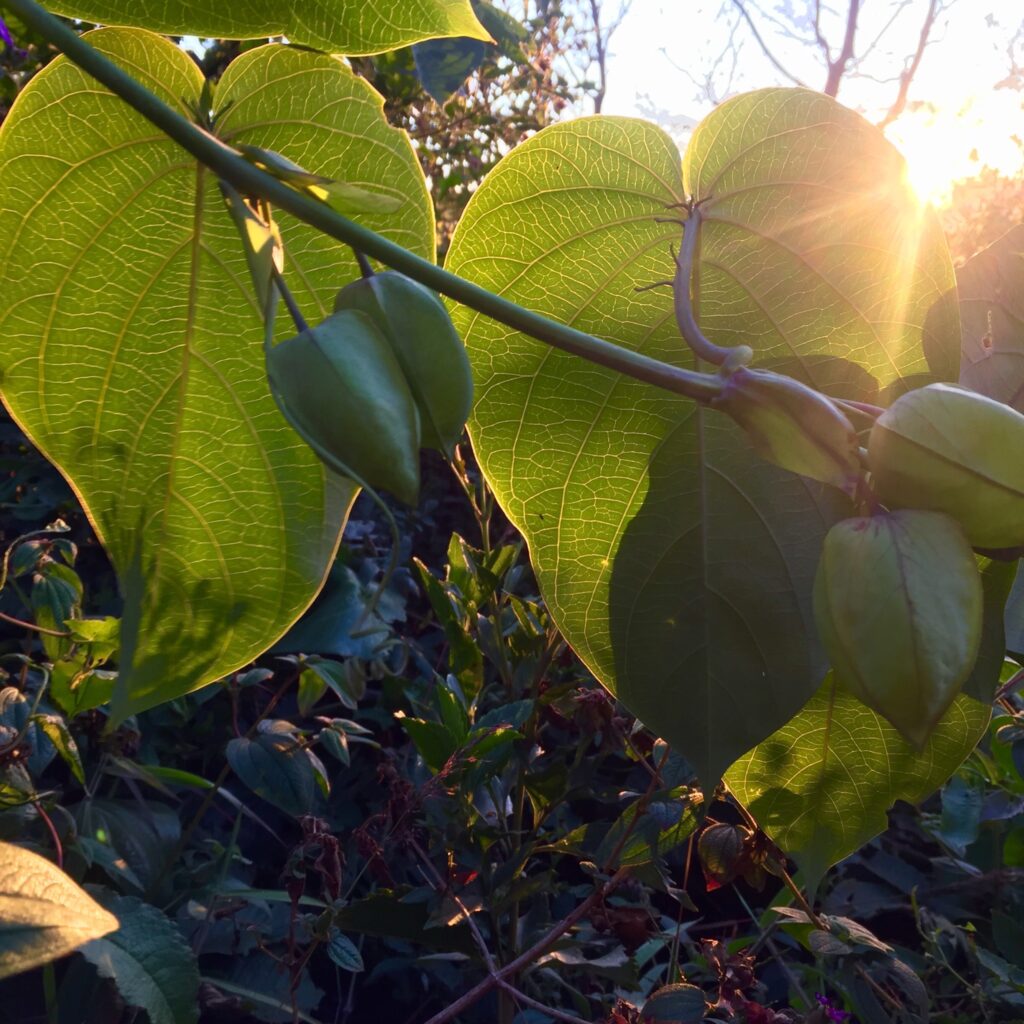
Granadilla grows between elevations of 3,000 to 8,850 ft (900-2,700 m). It prefers moderate moisture and tolerates fairly poor soils — but, plants thrive with more nutrients and adequate water. We’ve found that the fruits from vines grown in more fertile soils are larger and sweeter.

In addition to being delicious, granadilla also has notable health benefits. It has many medicinal uses among traditional cultures and has been used to help reduce nasal congestion + coughing, regulate digestion, treat diarrhea, soothe gastritis + ulcers, and to ease insomnia.

Regularly eating the fruits boosts overall health, as they are rich in nutrients like vitamin C, antioxidants, proteins, and fatty acids (Saravanan, et al.). Studies have found that the fruit pulp and seeds are also an important source of polyphenols — which may be helpful in reducing weight gain & low-grade chronic inflammation (Angel-Isaza, et al.).
The polyphenols in Passiflora ligularis also have antimicrobial properties (Saravanan, et al.). A 2021 study tested a methanol extract of the leaves against several different strains of pathogenic bacteria. They found that the extract of granadilla leaf showed significant activity against staph and proteus bacterias, when compared to ciprofloxacin, an antibiotic medication used to treat a variety of bacterial infections (Smruthi, et al. 53).

Additionally, granadilla leaf extract has been shown to reduce anxiety (Soto-Vásquez, et al.).
Studies have found that granadilla has anti-diabetic effects and thus, may be helpful in helping to manage diabetes. One study showed that Passiflora ligularis fruit decreases blood glucose and reduces oxidative stress by removing free radicals in those with diabetes (Anusooriya, et al.).
Granadillas are also a food source for a variety of butterfly species. We’ve noted at least three different kinds of caterpillars munching the leaves.
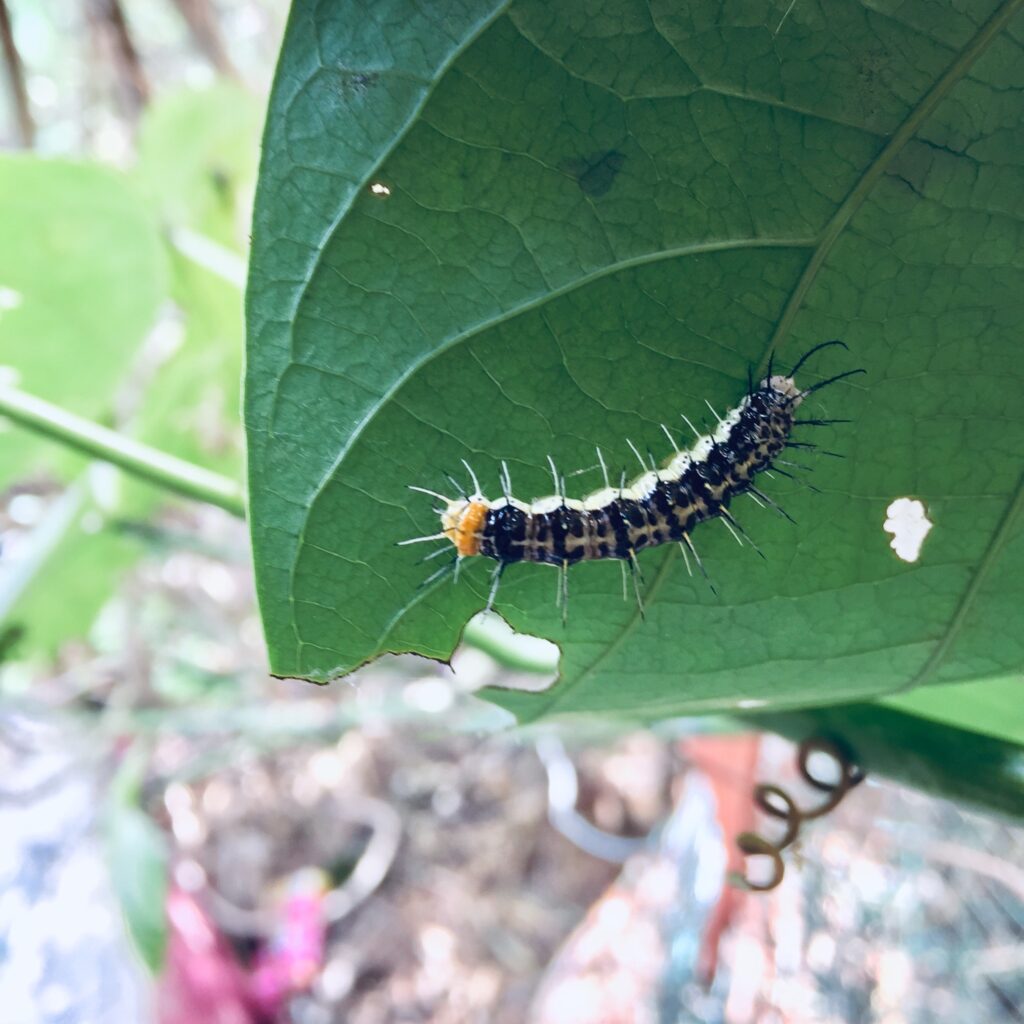
Certain species of butterflies lay their eggs on the leaves of the granadilla plant, so that when the baby caterpillars hatch they have plenty to eat before building their cocoons.

We recently watched a just-hatched butterfly perched on a granadilla leaf drying off its wings before flying off.
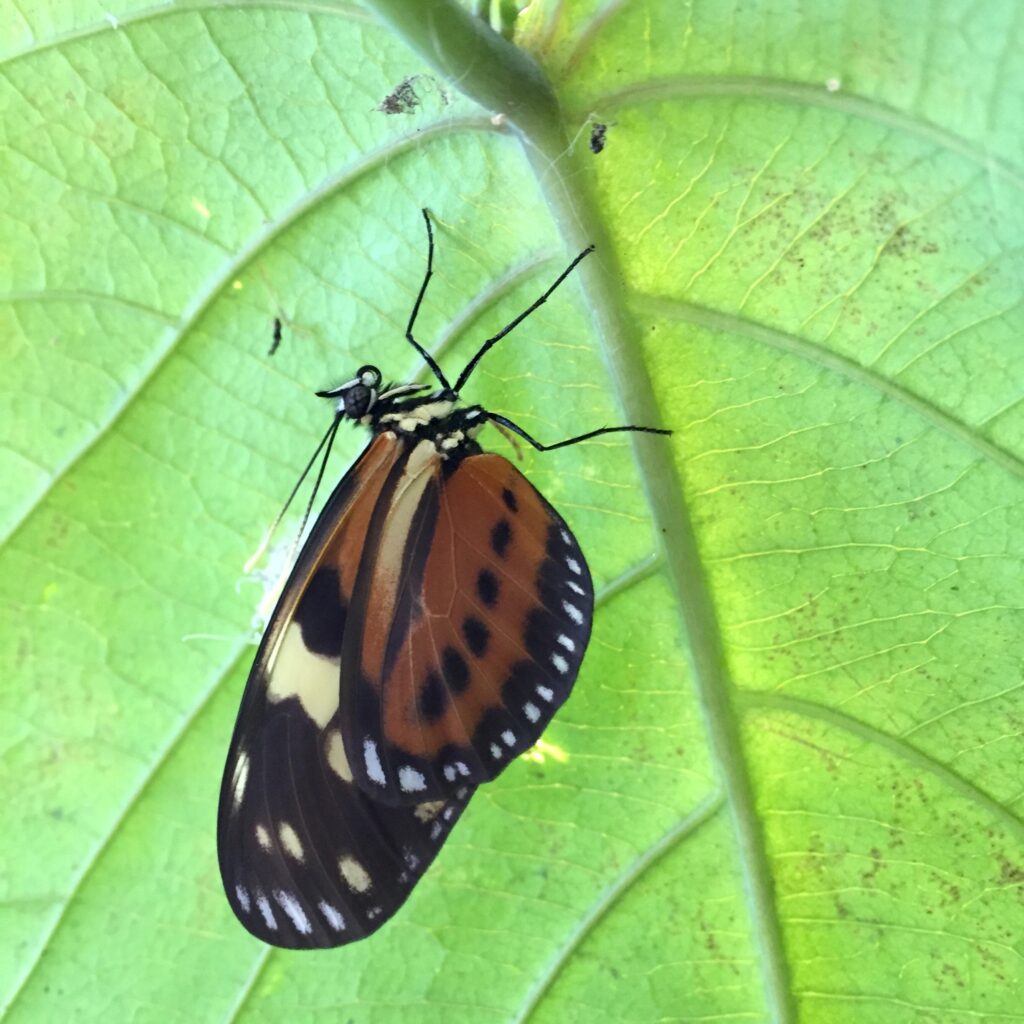
In addition to feeding beautiful butterflies, there are many other reasons granadilla is one of our favorite fruits growing on the farm. I love it for it’s delicious, easy-to-eat fruits and it’s gorgeous, aromatic flowers — the fact that the fruits are packed with nutrients and other health boosting properties is just an added bonus.

References
Angel-Isaza, Jaime, et al. “Polyphenols from Passiflora ligularis Regulate Inflammatory Markers and Weight Gain.” Biomolecular Concepts, vol. 12, no. 1, 2021, 36-45.
Anusooriya, Palanirajan, et al. “Antioxidant and Antidiabetic Effect of Aqueous Fruit Extract of Passiflora ligularis Juss. on Streptozotocin Induced Diabetic Rats”, International Scholarly Research Notices, vol. 2014, Article ID 130342, 10 pages, 2014. https://doi.org/10.1155/2014/130342
Chóez Guaranda, Iván Andrés. “Chemical composition of essential oils of shells, juice and seeds of Passiflora ligularis Juss from Ecuador.” Emirates Journal of Food and Agriculture. 2015. 27(8): 650-653 doi: 10.9755/ejfa.2015.04.039
Mohamed, Khaled and Mohamed Koriem. “Importance of Herba Passiflorae in Medicinal Applications: Review on Experimental and Clinical Pharmacology.” Biointerface Research in Applied Chemistry. Volume 11, Issue 5, 2021, 12886 – 12900.
Morton, Julia F. “Sweet Granadilla.” Fruits of Warm Climates. 1987. 330–331.
“Passiflora ligularis – Juss.” Plants for a Future.
Santos, Tacila RJ, et al. “Improvement of bioactive compounds content in granadilla (Passiflora ligularis) seeds after solid-state fermentation.” SAGE Journals. Volume 27, issue 3. April 1, 2021. 234-241.
Saravanan, Shanmugam and Thangaraj Parimelazhagan. “In vitro antioxidant, antimicrobial and anti-diabetic properties of polyphenols of Passiflora ligularis.” Food Science and Human Wellness. Volume 3, Issue 2. June 2014, 56-64.
Sepúlveda, Paula M., et al. “Passiflora ligularis leaf ultrasound-assisted extraction in the optimization of flavonoid content and enhancement of hypoglycemic activity.” Journal of Applied Pharmaceutical Science, 2020; 10(08):086–094.
Smruthi, Ramesh, et al. “The active compounds of Passiflora spp and their potential medicinal uses from both in vitro and in vivo evidences.” Journal of Advanced Biomedical and Pharmaceutical Sciences. 4 (2021) 45-55.
Soto-Vásquez, Marilú Roxana, et al. “Fitoterapia a base del extracto fluido de Passiflora ligularis en el tratamiento de la ansiedad ante los exámenes.” Medicina Naturista. 2019; Vol. 13, No 1.

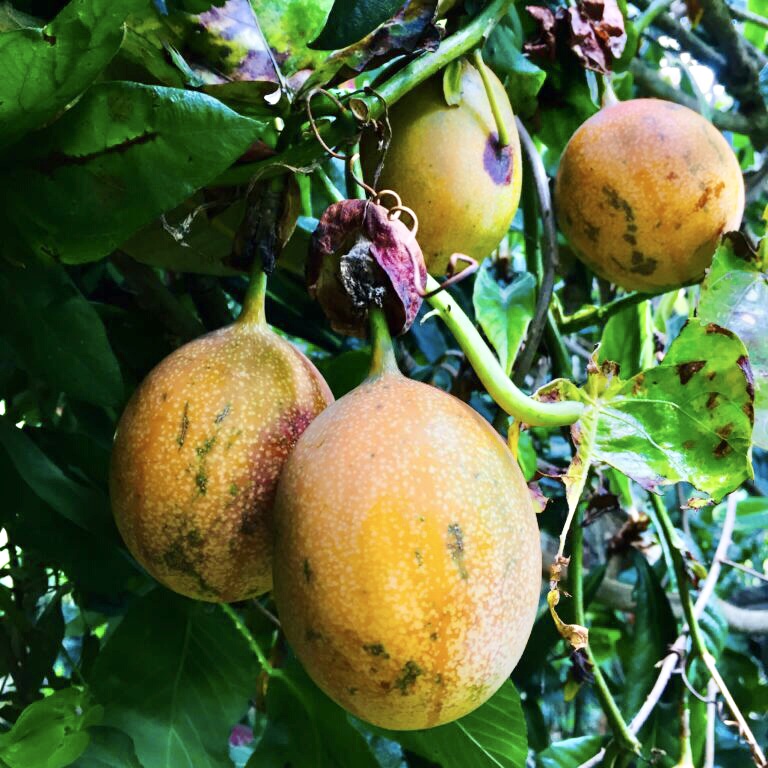
Hi Kristine: This is Nancy Knight. We’ve met several times most notably at George and Marcine’s last Thanksgiving. Anyway we are very interested in the Granadilla (me because of the amazing flower and Alan because of both the fruit and it’s ecological value). Can we buy either some seeds from you or preferably a small plant that we can plant here in our mountain top? Please let me know.
I hope that life is treating the three of you well!